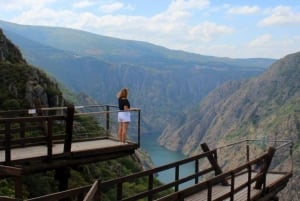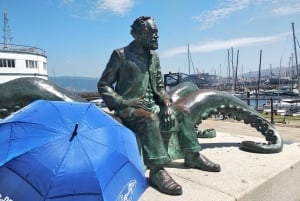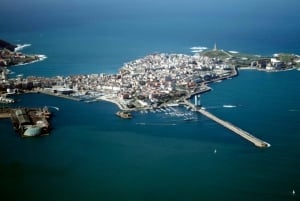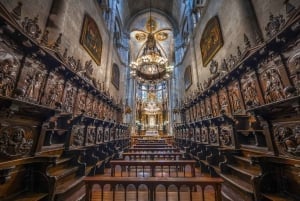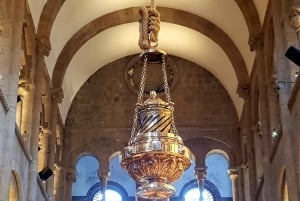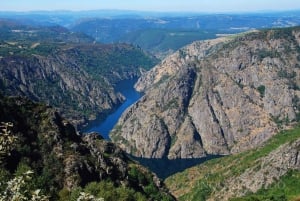Saint James Way
Santiago de Compostela has been a major centre for pilgrims since medieval times (5th century). At the heart of this has been the shrine of St. James. There is the adventure brought by the great journey thanks to the extremes of the weather and Galicia's mountainous terrain and the route as far as Finisterre that seemed like the end of the earth to a tired pilgrim.
The story goes that the Apostle, St. James, having spent some time converting Spaniards to Catholicism, returned to Jerusalem where he was beheaded by the Romans in AD 44. His body was taken to Spain, landed at the Bay to Padron (Iria Flavia), in Galicia and buried in a stone coffin. Eight centuries later a star shining above a field gave the sign that the coffin could be found at the spot. A stone tomb was indeed found and it was assumed that the three bodies that were found were those of St. James and two of his disciples. King Alfonso II of Asturias pronounced St. James the protector of Spain, and a church was built close to the site, along with a monastery close to it. This formed the beginnings of the settlement which developed into Santiago de Compostela. The name is from St. James (Santiago) of the starry field (campusstellae in Latin).
There were several pilgrim routes to Santiago. However, the most popular was the French route crossing the Pyrenees Mountains which separate France and Spain through the Roncesvalles (in French Roncevaux) Pass, having left France at Saint-Jean-Pied-de-Port. The journey is over 700 kilometres and thus the route became popular with shrines, hostelries and churches along the way and became known as El Camino de Santiago. Large towns grew up on the route such as Burgos and Leon, and there was a flourishing trade for innkeepers and bandits! Many bridges were built such as Puente la Reina, on the orders of the Queen in the twelfth century. By this time even a guidebook had been written by a Frenchman, Aimerico Picaud, listing the best inns, places to avoid, what food to eat and where not to drink the water. Even a little phrase book was included!
Various religious orders set up sanctuaries along the way to look after the pilgrims. It was not long before a uniform became popular. This consisted of a hat to keep off the sun and rain, stout footwear, a walking stick and a water bottle. The badge of the pilgrim became the scallop shell as these were found on the beach at Padron, where St. James landed and is used as proof that the route was completed! As the pilgrim entered Santiago and the final part of the journey they would have to climb the final hill and look down on the city from Monte del Gozo (Mount of Joy), a magical spot – the pilgrim had finally arrived.





